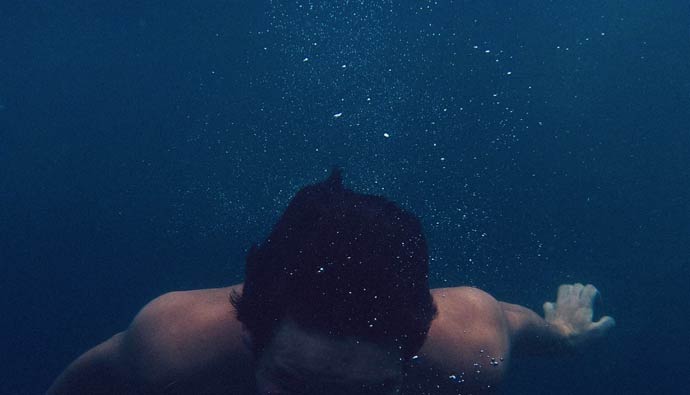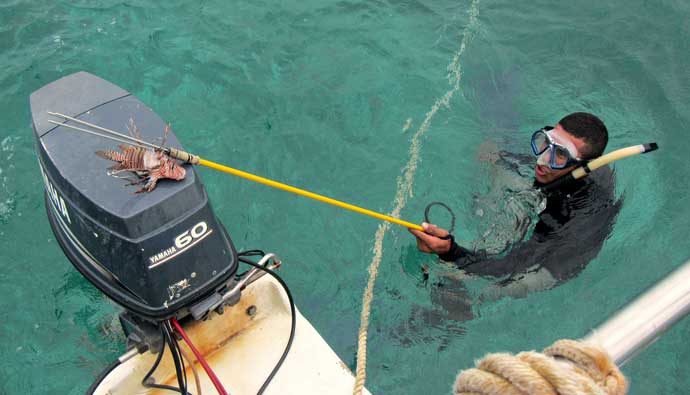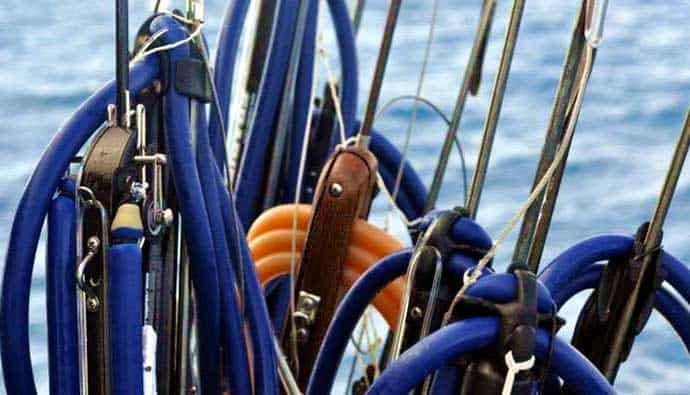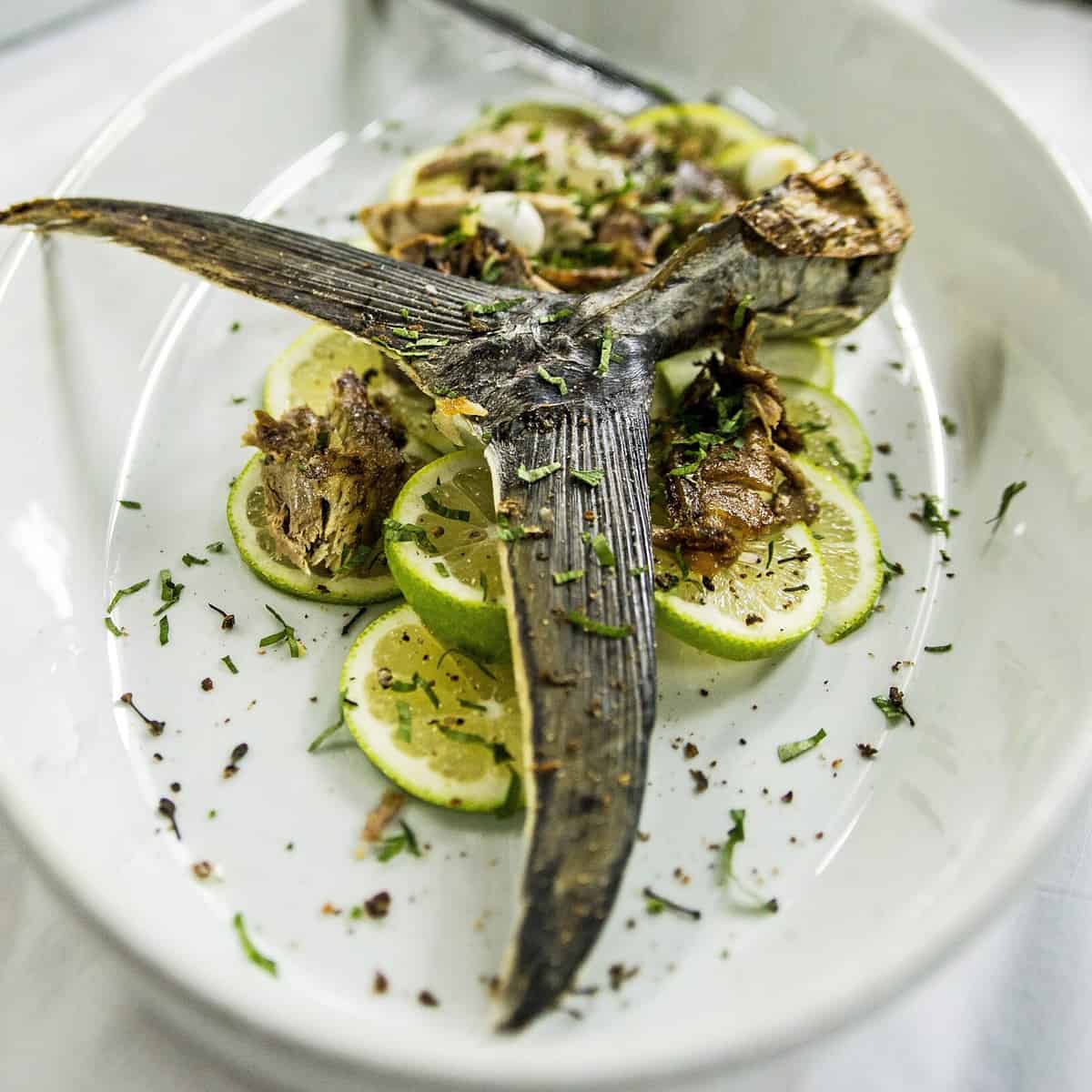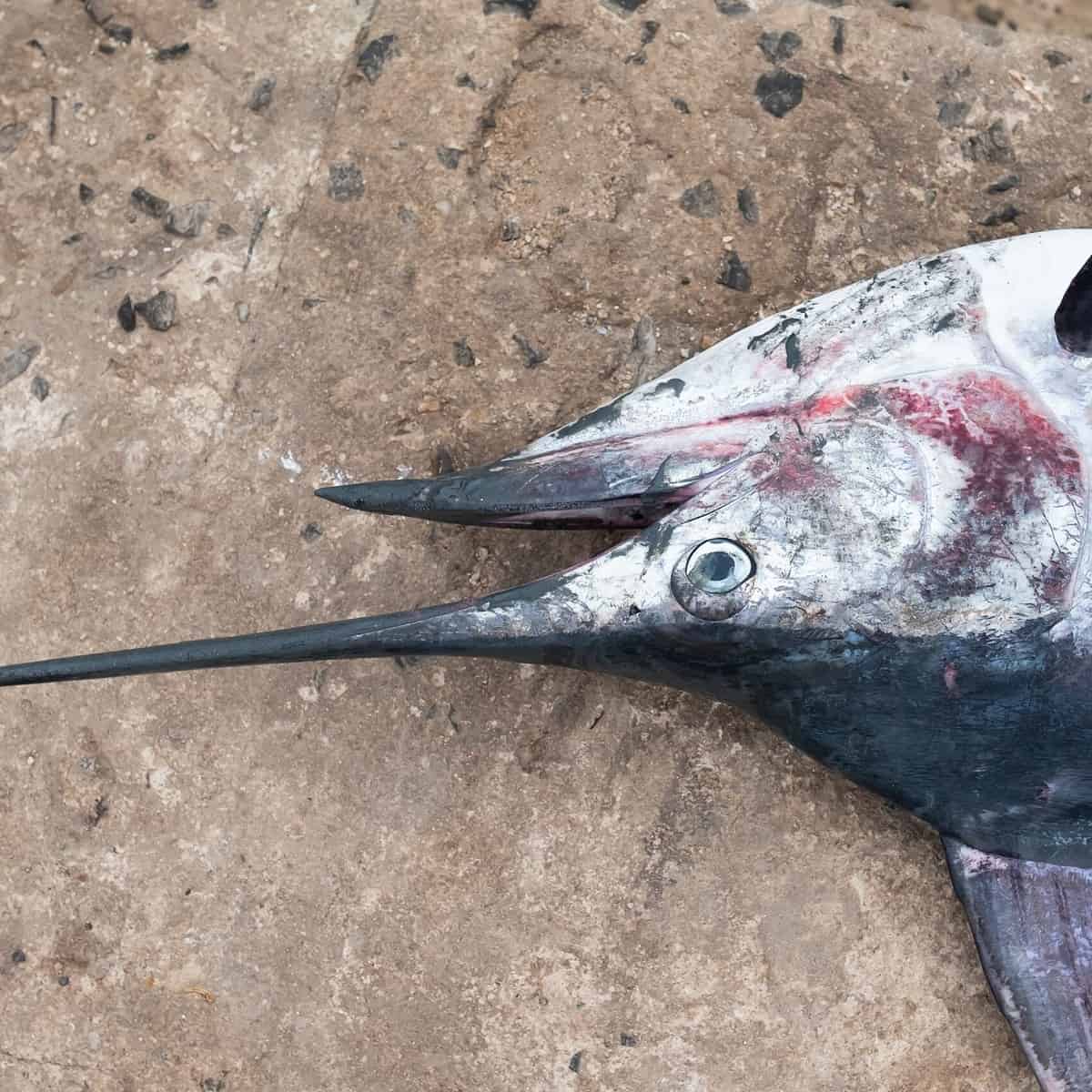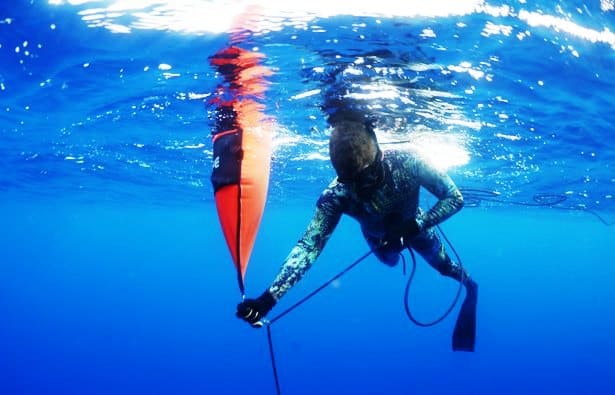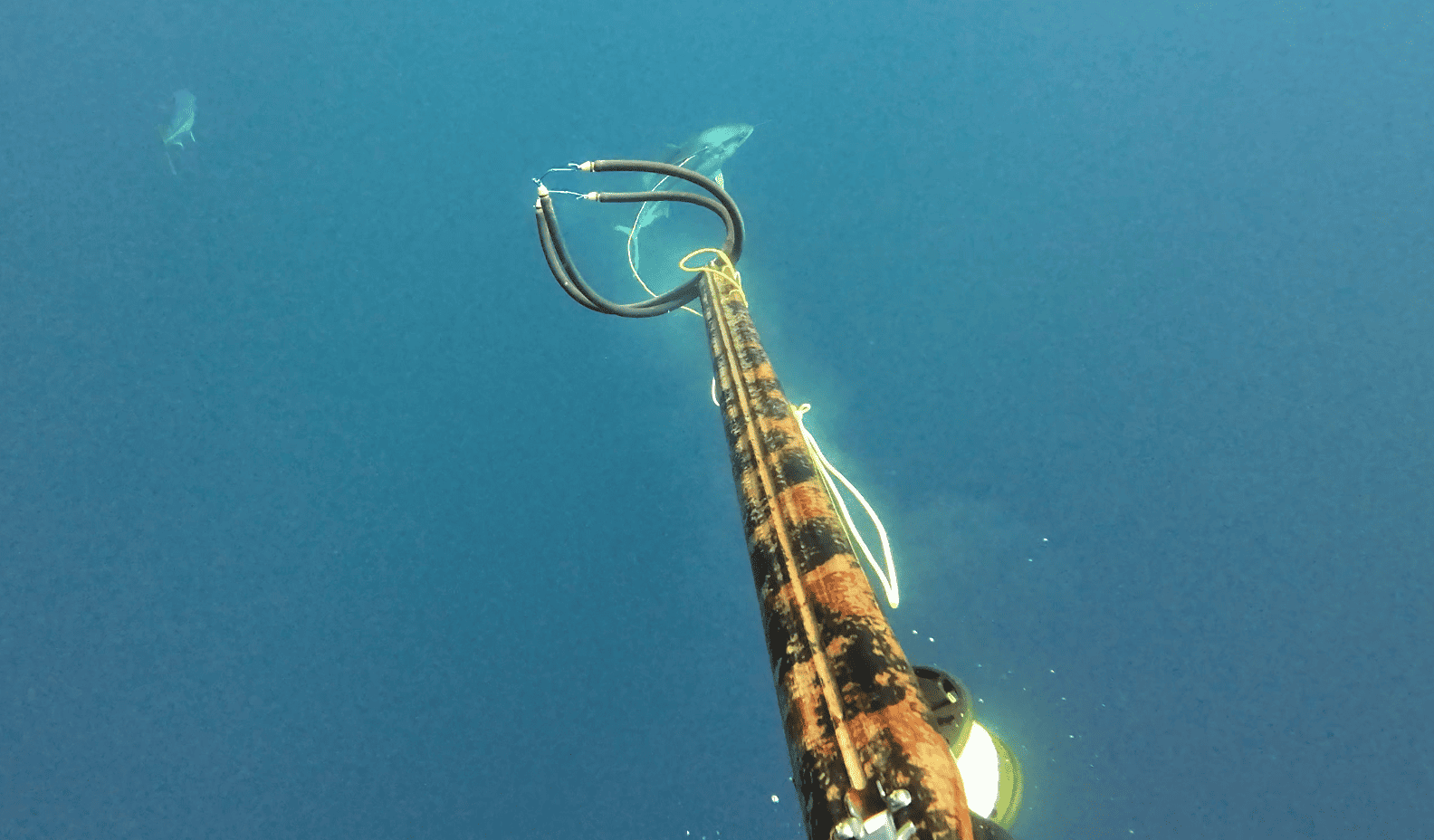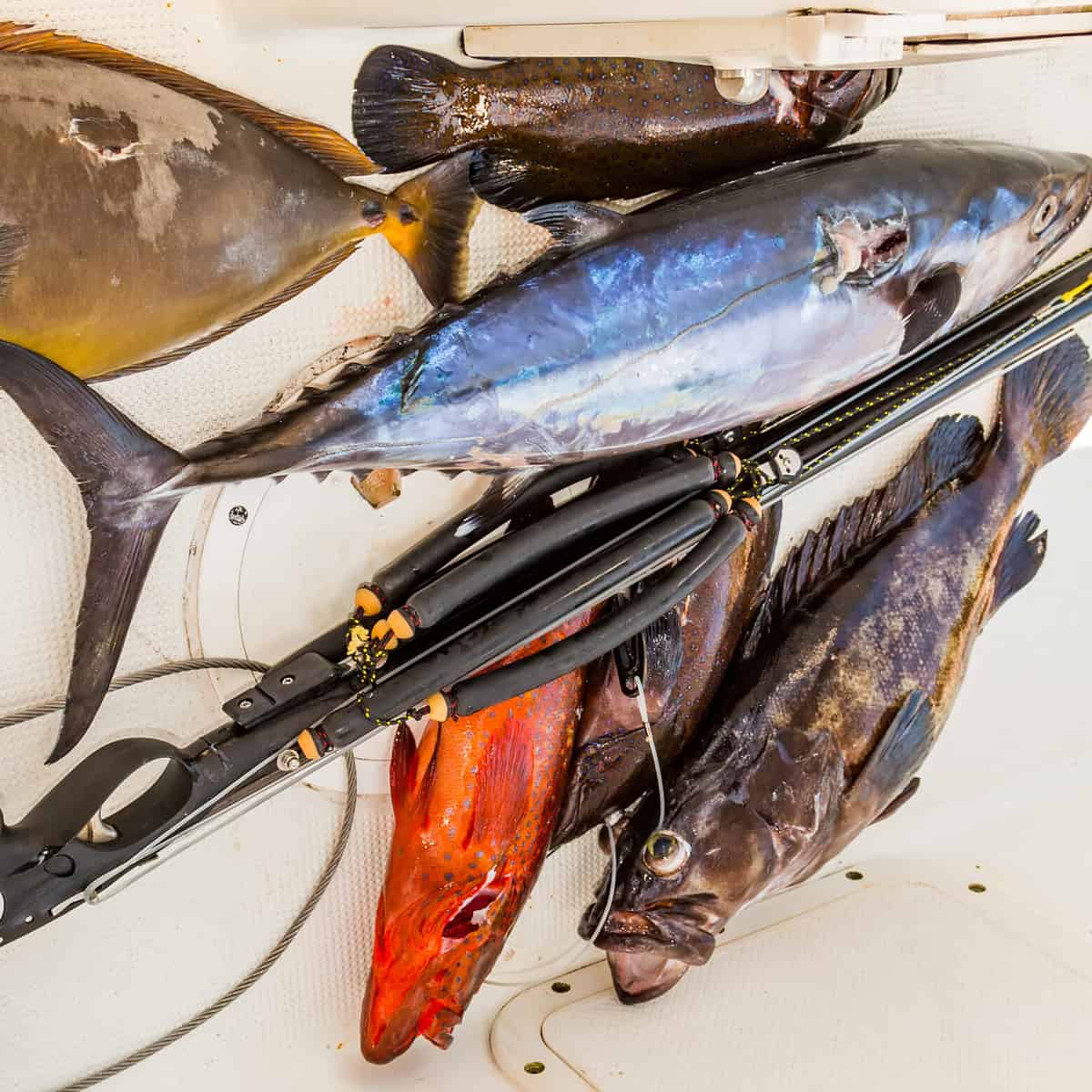Are you curious about improving your yellowtail spearfishing techniques? When I first started spearfishing, yellowtail was one of the top fish I wanted to catch. However, there’s a decent learning curve between reef fish and pelagic. In this guide, I’ll share my observations of spearing hundreds of yellowtails over the past six years.
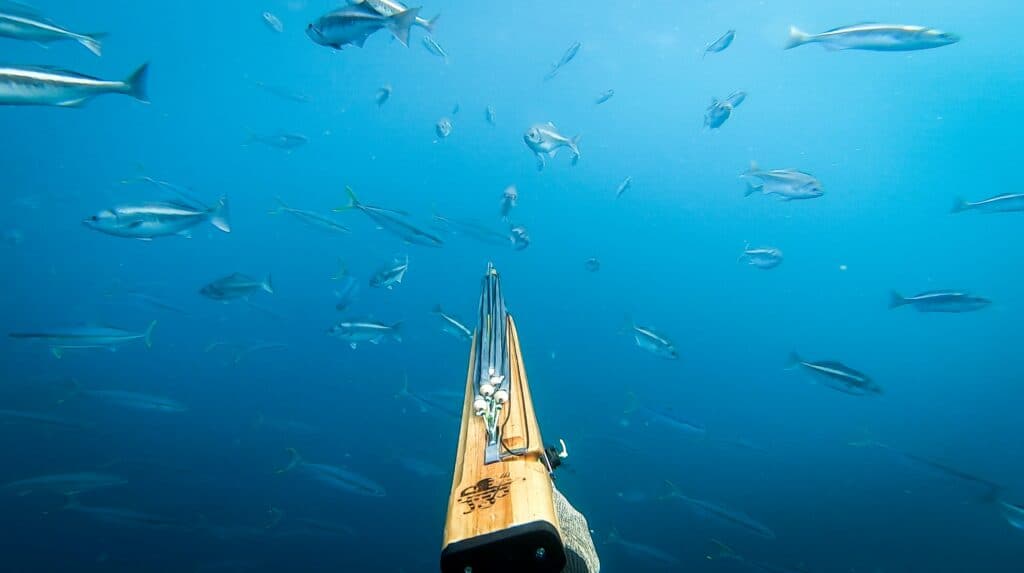
We’re going to focus on the California yellowtail (seriola lalandi), which is common throughout Southern California and Baja. They have an average life expectancy of 5-6 years, but some reach around 12 years. The females take 2-3 years to spawn between June and October.
They eat all kinds of bait, including sardines, squid, anchovies, California flying fish, round herring, and mackerel. When diving, I like to look for blue perch and blacksmith because it seems like they like to hang with each other on the kelp patties.
Yellowtails like a water temperature above 62 degrees F. I’ve heard the ideal range for spearing them is 62-66 degrees F, but I’ve also seen them in warmer waters in the mid-70s.
They are eaten by sea lions, great white sharks, and humans (especially spearfishermen).
Where To Find Yellowtail
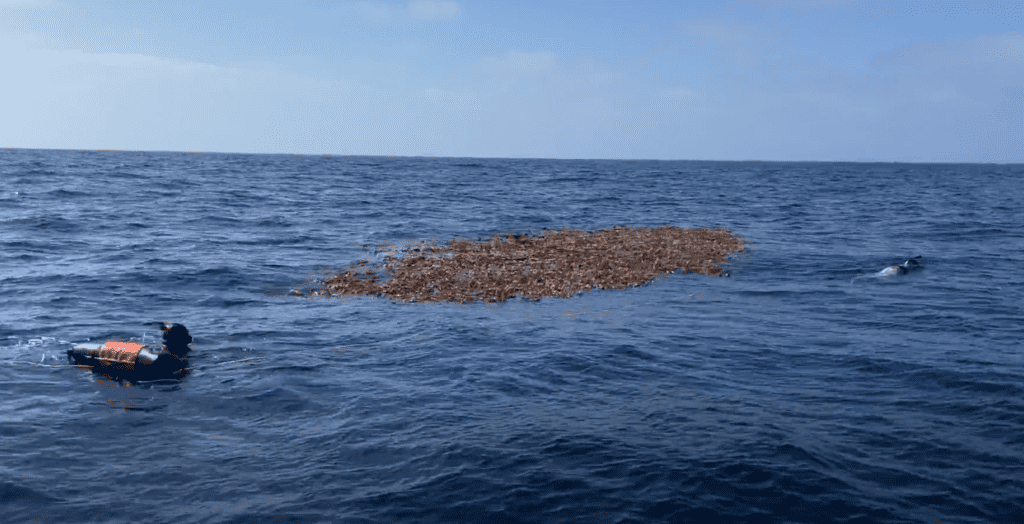
The two main areas I hunt for yellowtail are Southern California and Baja.
In Southern California, the common places to find them are around the islands like Catalina, kelp patties, and kelp forests along the coast. San Diego is always a good spot during summer if you want to try shore diving. However, it’s much easier to find them on a boat.
In Baja, they are on the Pacific and Sea of Cortez sides. The larger-grade yellowtail that I’ve seen was way down south in Punta Eugenia. It’s not uncommon to see 50+ pound yellows. I’ve heard some guys have shot 70+ too.
On the Sea of Cortez side, I haven’t seen them get much bigger than 30 pounds, but I’m sure there are some big ones lurking.
Since there isn’t much kelp on the Sea of Cortez side, you’ll want to find rocky structures, especially pinnacles. The yellowtail will swim by and make passes, giving you an opportunity to shoot.
Best Seasons for Yellowtail Spearfishing
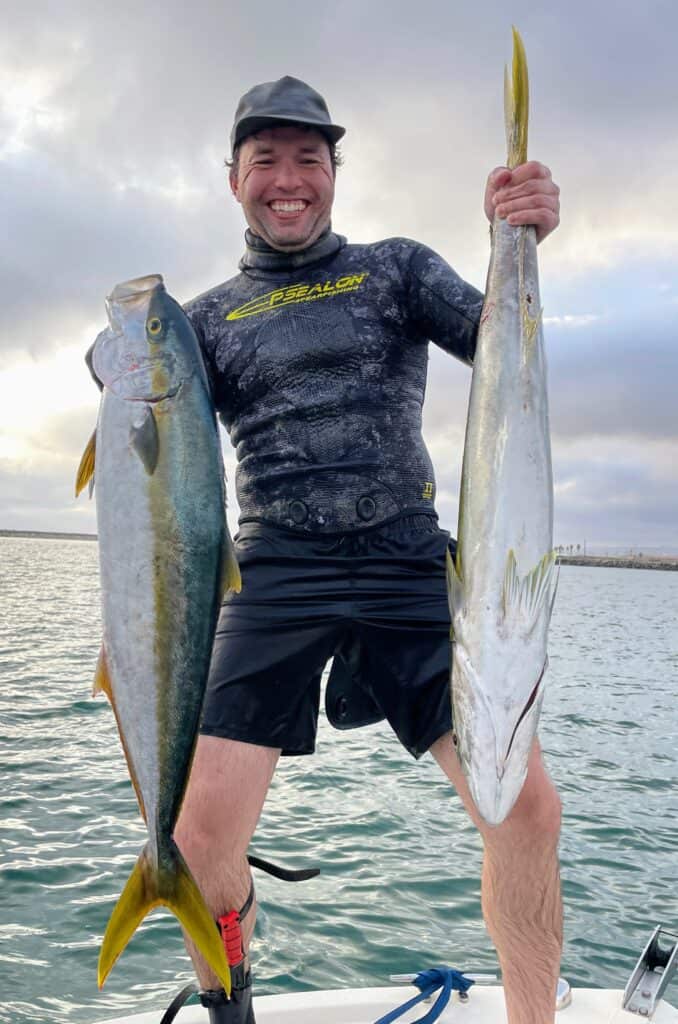
The best season for yellowtail spearfishing is summer. Depending on the year and conditions, May through September is a good time to target them. However, it’s all dependent on water temperature so make sure you’re looking at your weather app and checking sites like FishDope to see what people are catching.
The homeguard yellowtail stick around all year round, but they are tough to find. I had a buddy shoot a nice one at Catalina one February went the water was freezing. Usually, they stay deep, but for whatever reason, this one swam near him on the edge of the kelp, and he made a great shot.
Equipment and Gear
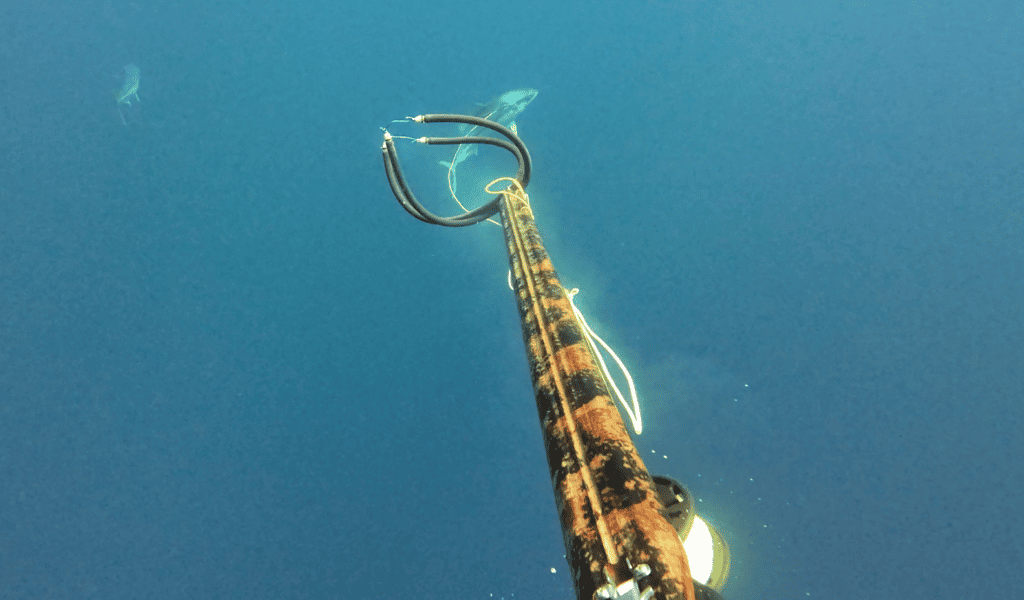
Yellowtail spearfishing gear can vary depending on the size of the fish. My first big yellowtail was 34.5 pounds and I shot it with a 100cm two-band pipe gun with a single flopper and reel. I don’t recommend it.
My setup now is an Abellan 110 with a single flopper and reel. I use kite line or stiff Dyneema as a shooting line, but mono works too. I feel confident in this setup for anything in the 30-pound and lower-range yellows.
If you’re going for the big ones, then I would switch over to a 120 or 130 with a slip-tip and breakaway float system. These fish are powerful and I don’t want them around me until they’re tired.
Spearfishing Techniques
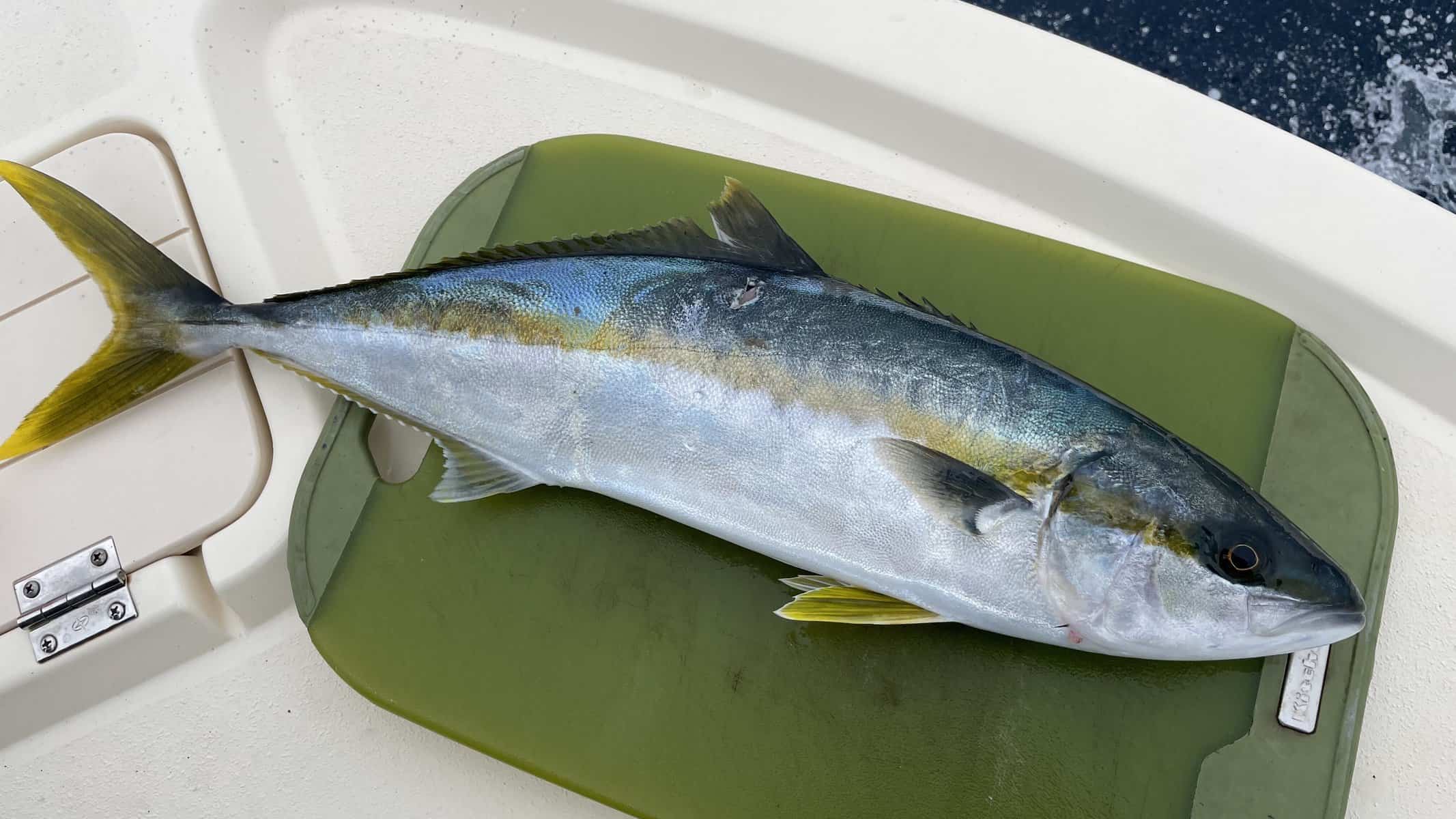
The spearfishing techniques for yellowtail that’s worked consistently has been flashers and making squid fingers. We typically hang a flasher rig from a float or off the boat to get their attention. When the school comes in to check it out we dive down and shoot the biggest one.
Other flashers include CDs with a small float attached or one you can buy from a dive shop. A lot of guys make their own with a PVC pipe and some reflective tape.
Another tip that’s worked for me has been opening and closing my non-trigger hand. I call this technique — squid fingers. They are naturally curious and any movement that’s not moving towards them usually has them coming closer to you.
Baja yellowtail are less scared of humans, thus making them easier to hunt. California yellowtail takes more skill. When diving down on a California yellowtail, try not to dive directly at the fish but more parallel. Wait for them to get curious and make a quick pass in your direction then take your shot.
Safety and Conservation
Spearfishing is inherently dangerous if you don’t follow the basic safety practices. When diving, make sure you have a buddy watching over you. This is important especially if you’re going for larger grade yellows and don’t have a breakaway float system.
I’ve had plenty of yellowtail that I’ve shot and didn’t stone go ballistic and wrap around me with my reel line. Therefore, line management is critical. One way to keep the tangles at bay is to swim backwards to keep the line in front of you. Sometimes it’s too difficult to reel your line in while fighting the fish. If there is current, face away from the current to allow the line to drift away.
Regarding conservation, since yellowtail are fast-growing fish, there isn’t much concern about their populations being dented by spearfishermen. Follow your local regulations so you don’t get in trouble.
Culinary Delight: Preparing Your Catch

Here’s my complete process for preparing yellowtail to get the best quality meat.
When I get control of the fish, I take my knife and brain spike it (ikejime) then cut the gills to bleed it out. If I have a shinkeijime wire on the boat, I’ll cut the tail with my knife, then run the wire down the spike to sever the nerves. Then it goes on ice in the kill bag.
At the end of the day, on the way back into the dock, we’ll gut and gill the yellowtail. It’ll go in a salted ice bath in my cooler for a few days to let the rigor mortis subside.
Then I fillet it and chamber vacuum seal the sashimi cuts. I wait the 7 days at -4 degrees Fahrenheit before eating it raw.
I save the collars to be marinated on thrown on the grill. The head and bones are boiled with vegetables and seasonings to make a delicious bone broth. Only boil it for an hour. The leftover meat can be turned into a yummy yellowtail salad using mayo, mustard, and furikake, then mixed together and thrown in a sandwich.
Final Thoughts
Spearfishing yellowtail is a fun part of the season. You get to spend the day on the boat with friends, searching for patties. It’s always fun to see fishermen out there when the bite stops, and they think the fish have left, only for you to jump in the water and plug a few.
Sometimes they’re not hungry for the live bait or lures. Sometimes only feeding them steel does the charm.
I shot way more yellowtail in Baja than I did in California. If you can figure out a way to get down there, I highly recommend it because it can be a bit expensive and discouraging if you can’t get one here at home. But don’t worry, in time you’ll land them here as well!





 Facebook
Facebook YouTube
YouTube